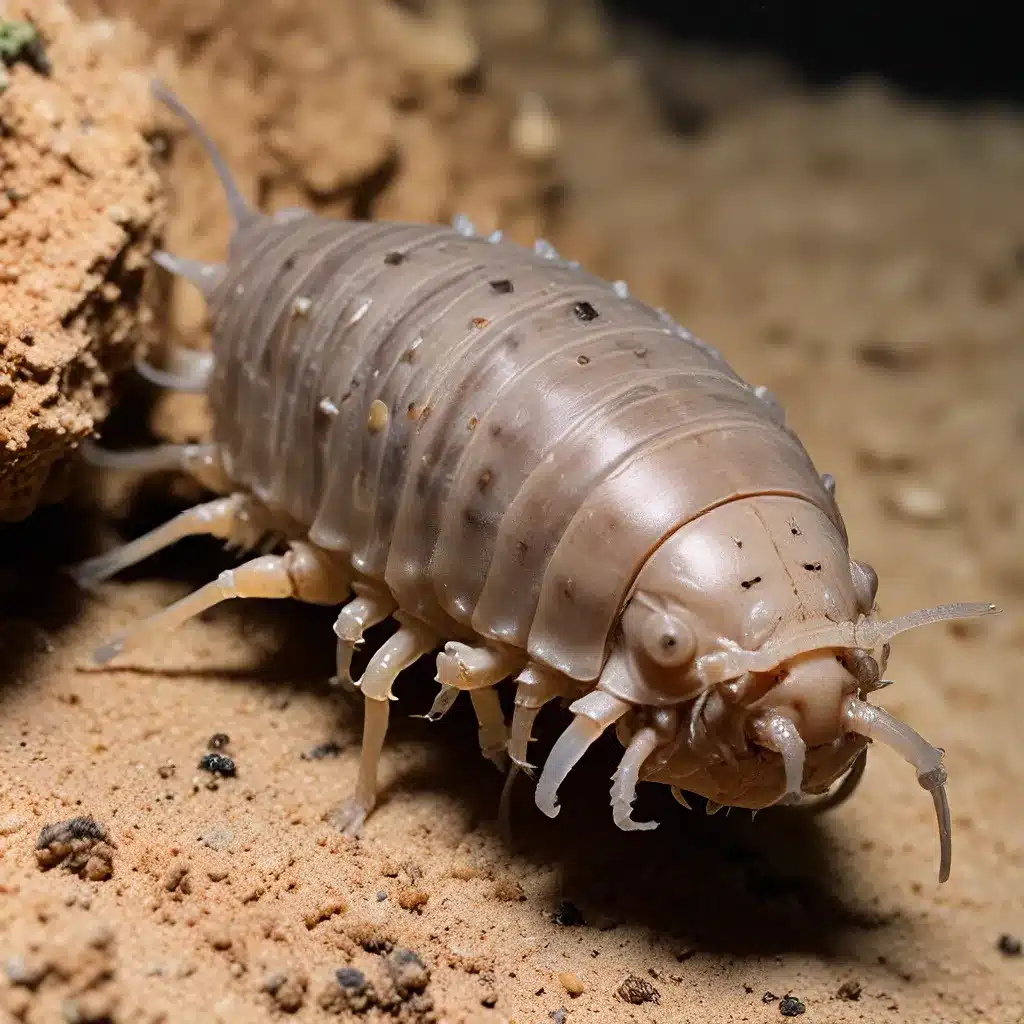
The Remarkable World of Munnopsid Isopods
The deep-sea floor is a realm teeming with diverse and enigmatic life forms, and among them, the munnopsid isopod stands out as a truly captivating creature. These small crustaceans, with their alien-like appearance and fascinating behaviors, have long captured the intrigue of marine biologists and aquarium enthusiasts alike.
Munnopsid isopods belong to the order Isopoda, a group of small crustaceans known for their hard exoskeletons, numerous appendages, and flattened bodies – adaptations that allow them to thrive in the extreme pressures of the deep ocean. These benthic (bottom-dwelling) organisms have been observed scurrying across the abyssal plains, playing a crucial role in the complex food web of the marine ecosystem.
Evolutionary Enigmas: The Ancient Lineage of Munnopsids
The munnopsid isopod’s evolutionary history is as intriguing as its current-day appearance. Fossil records indicate that isopods, in general, have been present on Earth for over 300 million years, with the earliest known specimens dating back to the Paleozoic era. This ancient lineage has allowed these crustaceans to develop a wide range of adaptations, making them well-suited to inhabit diverse aquatic environments, from freshwater to saltwater.
The munnopsid isopod, in particular, is believed to have descended from this long-standing evolutionary line, with its unique features reflecting the challenges of life in the deep ocean. Their flattened bodies, specialized appendages, and reduced mobility are all adaptations that enable them to thrive in the extreme pressures and sparse food resources of the abyssal plains.
Uncovering the Mysteries of Munnopsid Biology
Exploring the intricate biology of munnopsid isopods reveals a remarkable array of adaptations that allow these creatures to survive and thrive in their deep-sea habitats. Their distinctive physical features are a testament to the evolutionary pressures they have faced over millions of years.
One of the most striking characteristics of the munnopsid isopod is its flattened body shape, which helps it withstand the immense pressure of the deep ocean. This adaptation, coupled with a hard exoskeleton, provides protection and stability in their environment. Additionally, the munnopsid isopod possesses a specialized set of appendages, including antennae and limbs, which it uses for locomotion, sensing the environment, and manipulating food sources.
Interestingly, the munnopsid isopod’s reproductive strategy is equally fascinating. These crustaceans are known to brood their eggs in a small chamber beneath their thorax, a behavior that likely helps to protect the young during their vulnerable developmental stages. After hatching, the munnopsid isopod may release hundreds of tiny offspring, ensuring the continued survival of their species in the challenging deep-sea ecosystem.
The Ecological Role of Munnopsid Isopods
Far from being mere passive residents of the ocean floor, munnopsid isopods play a vital role in the intricate web of life that sustains the deep-sea environment. As scavengers and detritivores, these crustaceans help to break down and recycle organic matter, making nutrients available for other members of the benthic community.
Their presence and activities contribute to the overall health and balance of the deep-sea ecosystem. By consuming decaying plant and animal matter, munnopsid isopods help to maintain the delicate balance of the marine food chain, supporting the diverse array of species that call the abyssal plains their home.
Furthermore, the munnopsid isopod’s unique adaptations and behaviors provide valuable insights into the complex and often poorly understood workings of deep-sea ecosystems. As we continue to explore and study these remarkable creatures, we gain a deeper understanding of the intricate relationships that sustain life in the ocean’s final frontier.
The Importance of Munnopsid Conservation
As we delve deeper into the mysteries of the deep sea, the importance of protecting the habitats and species that thrive in these environments becomes increasingly clear. Munnopsid isopods, as integral members of the benthic community, are a prime example of why conservation efforts are crucial for the long-term health of our oceans.
King Aquarium, a leading source for aquarium enthusiasts, recognizes the vital role that munnopsid isopods and other deep-sea organisms play in maintaining the balance of marine ecosystems. By supporting research and raising awareness about the importance of protecting these habitats, the company aims to inspire aquarists and hobbyists to become stewards of the underwater world.
Through responsible aquarium keeping practices, such as using sustainable filtration systems and incorporating native plant species, aquarists can help to create environments that mimic the natural habitats of munnopsid isopods and other aquatic species. By fostering a deeper appreciation for the intricate relationships within marine ecosystems, we can work towards preserving the delicate balance that sustains life in the ocean’s depths.
Exploring the Realm of the Munnopsid Isopod
As we continue to unravel the mysteries of the deep sea, the munnopsid isopod stands as a testament to the remarkable diversity and resilience of life on our planet. These unique crustaceans, with their alien-like appearances and fascinating behaviors, offer a glimpse into the wonders that still await discovery in the ocean’s final frontier.
By learning about the munnopsid isopod and its role in the marine ecosystem, aquarists and hobbyists can gain a deeper appreciation for the interconnectedness of all life within the aquatic world. Through responsible aquarium keeping practices and a commitment to conservation, we can play a vital role in preserving the delicate balance of these awe-inspiring environments.
So, let us dive deeper into the realm of the munnopsid isopod, unlocking the secrets of these remarkable creatures and inspiring a new generation of aquarists to become stewards of the underwater world.

